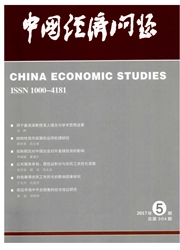

 中文摘要:
中文摘要:
本文基于1996-2009年中国省际数据,利用动态GMM方法对影响农村剩余劳动力转移的因素进行了实证检验。结果表明,消费和出口的扩张显著地减少了农村剩余劳动力;经济增长与产业结构对劳动力转移存在交叉效应,随着第二产业人均资本存量的上升和产值比重的居高不下,经济增长的就业弹性呈下行之势;技术进步和劳动力市场分割显著阻滞了劳动力转移;人力资本与农村剩余劳动力数量存在U形关系,但并不显著;滞后期因变量的系数为正,反映了劳动力对长期依赖于农业具有粘性。
 英文摘要:
英文摘要:
On the basis of panel data, the paper does an empirical analysis on rural labor transfer using the dynamic GMM. The result shows that consumption and export have a positive effect on the rural labor transfer; Between economic growth and industry structure is mixed, the employment elasticity of economic growth is decreasing with the increasing of per capital on the middle of industry;Technology progress and labor market segmentation having a conflicting effect; Between the human capital and surplus labor has a U shaped relation, but it is not obvious ; The coefficient of lagged surplus labor is positive, which implies the labor exists a dependency on the agriculture.
 同期刊论文项目
同期刊论文项目
 同项目期刊论文
同项目期刊论文
 期刊信息
期刊信息
